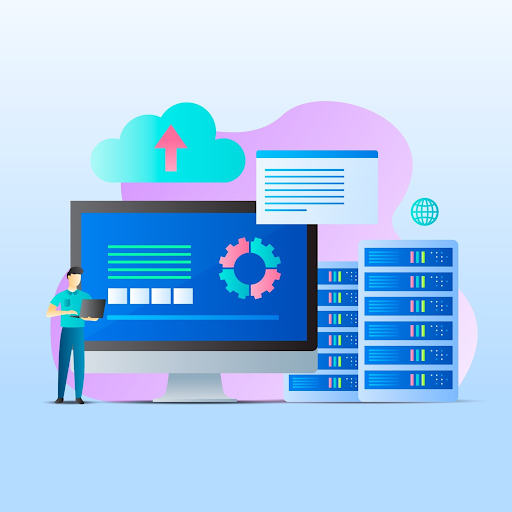Artificial Intelligence (AI) agents are entities that observe their environment through sensors and take actions based on their observations to achieve specific goals. These agents form the core of AI systems, enabling machines to interact with their surroundings intelligently. The key characteristic that differentiates types of AI agents is their level of intelligence and capability to process information. AI agents vary from simple systems that act on predefined conditions to complex agents capable of learning from their experiences.
Types of AI Agents
1. Simple Reflex Agents
Simple reflex agents act purely based on a set of predefined rules that connect specific conditions with corresponding actions. These rules, often called “condition-action” pairs, dictate how the agent responds to certain inputs from the environment. For example, a thermostat is a simple reflex agent that turns on or off based on the room temperature. If the temperature falls below a certain threshold, the thermostat activates the heating system.
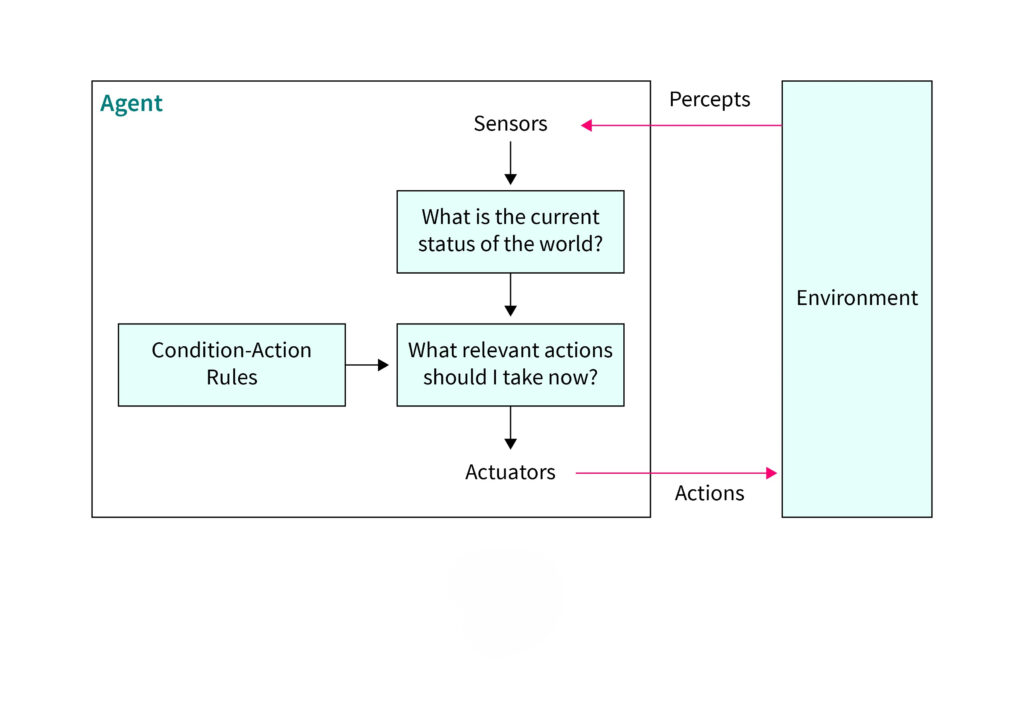
Characteristics:
- They only function in a well-defined environment where the rules are clear and unchanging.
- These agents do not have memory or the ability to store past information.
- They cannot reason or predict the consequences of their actions, as they only react to immediate inputs.
- Example: A security system that sounds an alarm when it detects motion in a designated area.
Limitations:
- They are unable to handle complex or dynamic environments since they cannot learn or adapt to changes.
- Without the ability to consider past states, they are confined to short-term responses, limiting their usefulness in unpredictable situations.
2. Model-based Reflex Agents
Model-based reflex agents improve upon simple reflex agents by maintaining an internal model of their environment. This internal model allows the agent to keep track of information about the world that may not be immediately visible, helping it make better decisions.
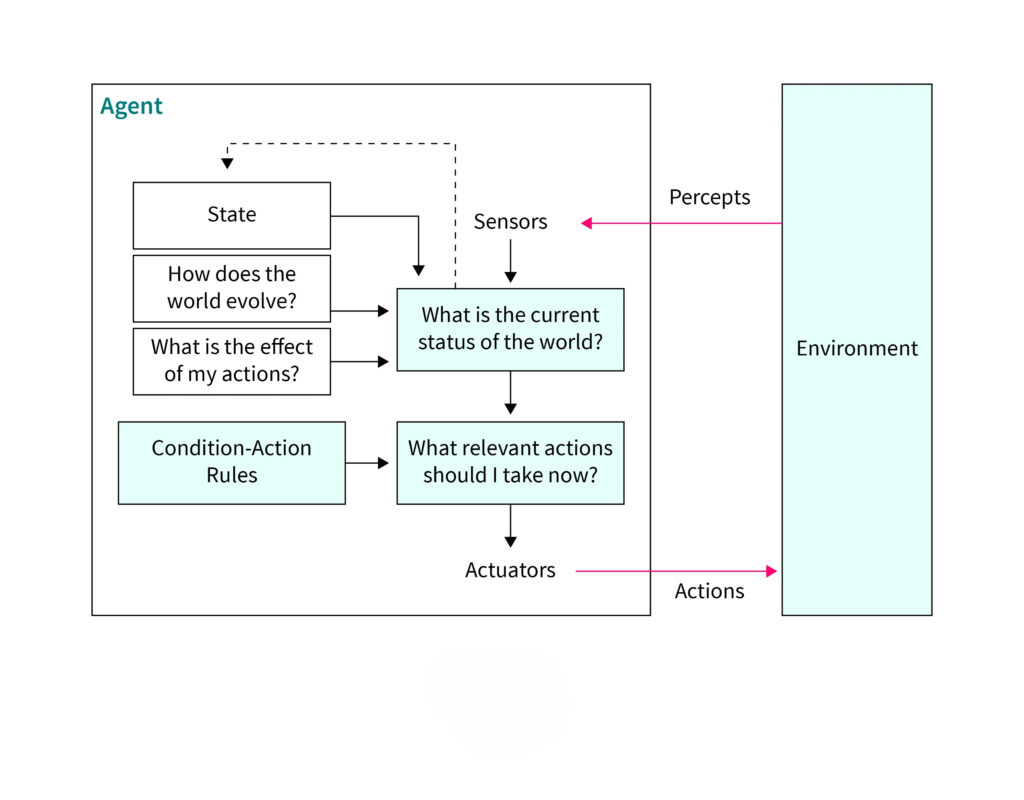
Characteristics:
- They maintain an internal state that keeps track of parts of the environment the agent cannot directly observe.
- The internal state is updated using both the current state of the environment and previous information, allowing the agent to handle more complex scenarios.
- Example: A self-driving car that uses sensor data to build an internal model of its surroundings, including other cars, pedestrians, and obstacles.
Advantages:
- By keeping track of the environment’s history, model-based agents can plan for future states and adapt to changes.
- These agents are able to deal with partial information, making them more flexible than simple reflex agents.
Limitations:
- Creating and maintaining an accurate internal model can be computationally expensive.
- The agent’s performance relies on the accuracy of its internal model, which may not always be perfect.
3. Goal-based Agents
Goal-based agents go beyond reacting to the environment. They are designed to achieve specific goals by planning their actions. These agents consider future consequences and choose actions that bring them closer to their desired outcomes.
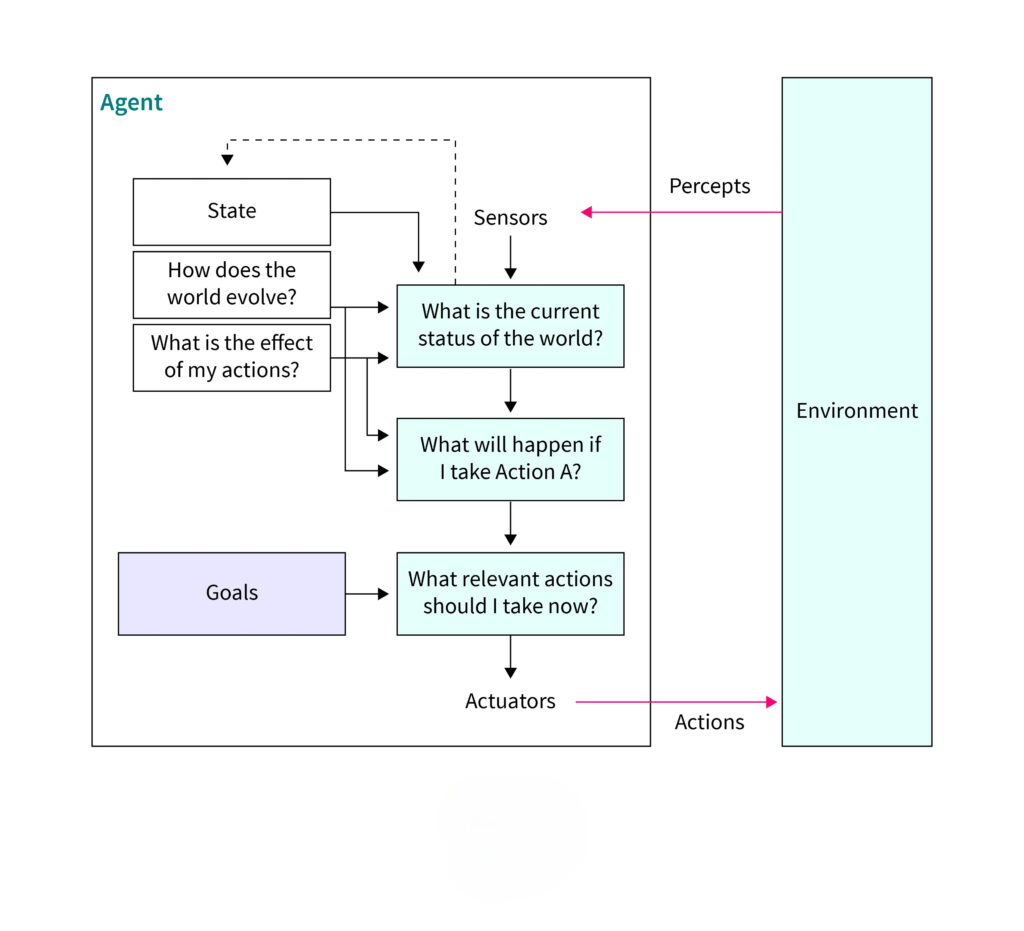
Characteristics:
- They are capable of reasoning and selecting the best course of action to achieve a goal, rather than just reacting to the current state.
- These agents use search algorithms to find the best path toward achieving their objectives.
- Example: A robot that navigates a maze by evaluating each possible path and choosing the one that leads to the exit.
Advantages:
- Goal-based agents have more flexibility since they can choose actions based on long-term planning rather than short-term reactions.
- They are effective in complex environments where simple reactions would not suffice.
Limitations:
- Finding the optimal path to a goal can be computationally intensive, especially in large or complex environments.
- They require a clear definition of goals, which might not always be straightforward in dynamic situations.
4. Utility-based Agents
Utility-based agents enhance goal-based agents by introducing a way to measure the desirability of different outcomes. Instead of simply achieving a goal, they choose actions that maximize their utility, or satisfaction, from the outcome.
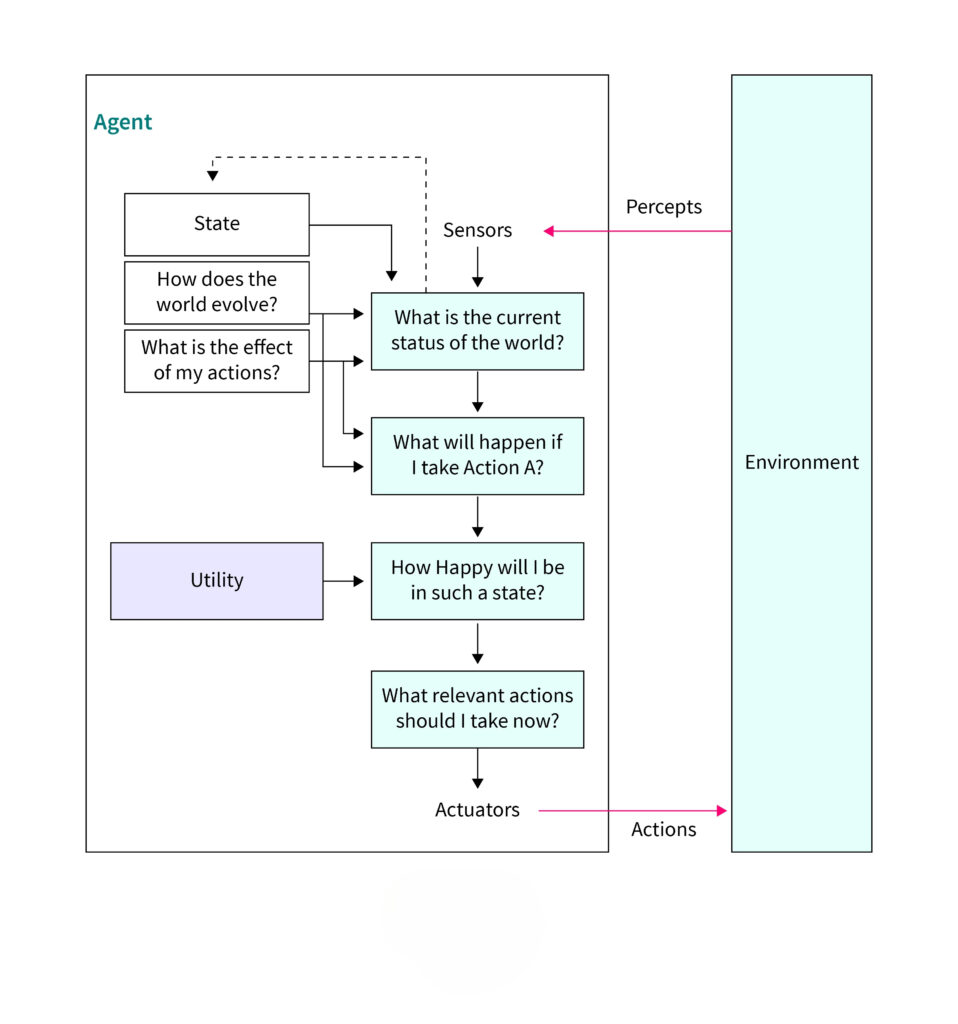
Characteristics:
- These agents use a utility function to assign values to different outcomes, allowing them to compare different options and choose the one with the highest utility.
- They evaluate trade-offs between different actions, considering both risks and rewards.
- Example: A stock-trading AI that not only aims to make profitable trades but also factors in risk, aiming to maximize profit while minimizing potential loss.
Advantages:
- Utility-based agents are more adaptable and can make better decisions in complex environments where multiple outcomes are possible.
- They can handle uncertainty by balancing risk and reward in their decision-making process.
Limitations:
- Defining a utility function that accurately captures all factors can be challenging.
- The complexity of evaluating every possible action and outcome can make these agents slower in real-time decision-making.
5. Learning Agents
Learning agents are capable of improving their performance over time by learning from past experiences. These agents start with limited knowledge but gradually become more effective as they gather data from their interactions with the environment.
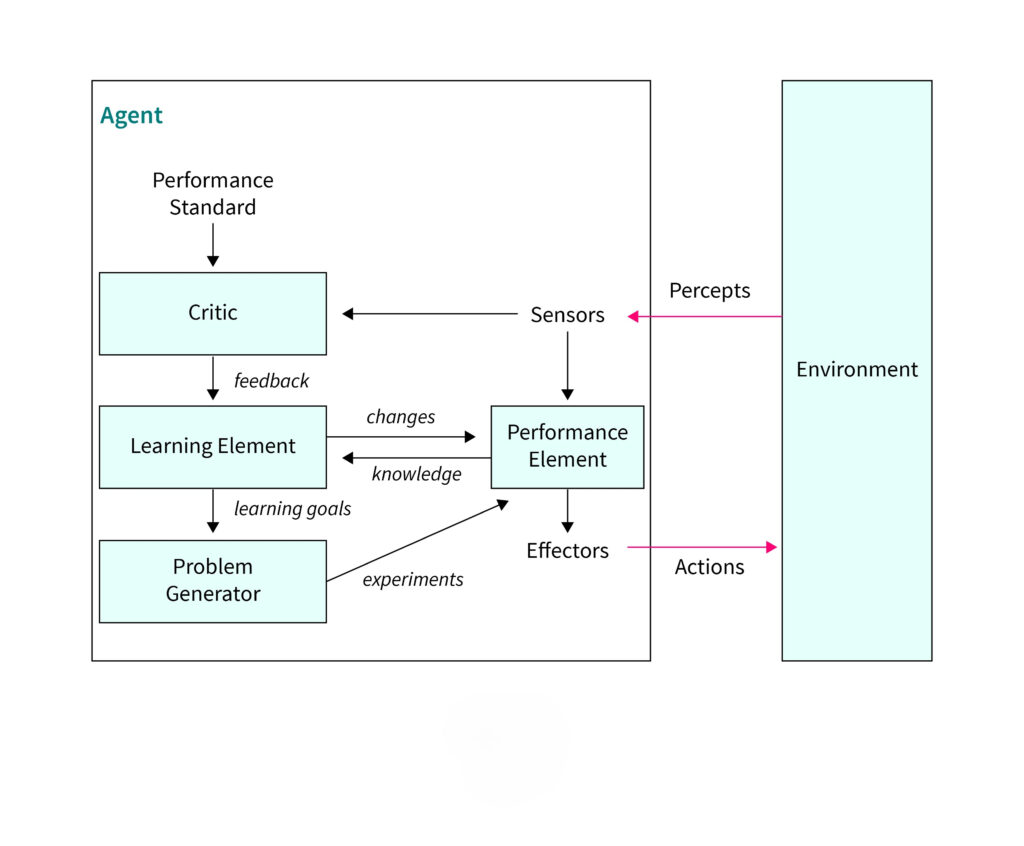
Characteristics:
- They have components like a learning element that allows them to improve, a critic that provides feedback on their performance, and a performance element that decides which actions to take.
- They use various learning approaches such as supervised learning, reinforcement learning, and unsupervised learning to adapt to new situations.
- Example: A recommendation system that improves its suggestions over time based on user interactions and preferences.
Advantages:
- Learning agents can operate in dynamic environments and improve without manual intervention.
- They can handle complex tasks and environments by continuously evolving their strategies.
Limitations:
- The learning process can be slow, and agents may initially make poor decisions.
- It can be difficult to design a learning process that guarantees continuous improvement in all situations.
6. Hierarchical Agents
Hierarchical agents are designed with multiple layers of decision-making, where higher layers oversee more abstract decision-making while lower layers handle more specific tasks. This structure allows these agents to break down complex problems into manageable subtasks, making their decision process more efficient.
Characteristics:
- These agents are organized into a hierarchy, where different layers of the agent deal with decisions at varying levels of complexity.
- The higher-level layers focus on planning and strategy, while lower-level layers handle execution and more immediate reactions to the environment.
- Example: A hierarchical robot control system where the high-level layer plans a route for navigation, and the lower layers control the robot’s wheels or sensors for real-time adjustments.
Advantages:
- Hierarchical agents are effective for solving complex problems by breaking them into smaller, simpler tasks.
- This layered structure improves both efficiency and scalability, making it easier to handle large-scale systems or tasks.
Limitations:
- The complexity of designing a well-functioning hierarchy can be significant.
- Errors or delays in one layer may affect the performance of the entire system, making coordination between layers crucial.
Uses of AI Agents
AI agents have found applications across various fields, revolutionizing the way tasks are automated and enhancing decision-making processes. Here are some key areas where AI agents are commonly used:
1. Robotics
AI agents in robotics allow machines to navigate environments, manipulate objects, and interact with humans. For example, autonomous robots in factories optimize manufacturing processes by making real-time decisions based on sensor inputs.
2. Smart Homes and Buildings
AI agents help in automating tasks such as temperature control, lighting, and security in smart homes. Smart assistants like Amazon Alexa or Google Assistant use AI agents to respond to voice commands and manage home devices.
3. Transportation Systems
In autonomous vehicles, AI agents play a critical role in perceiving the environment, making decisions about speed, direction, and safety measures. For instance, self-driving cars like Tesla’s Autopilot system use AI agents to analyze road conditions and navigate safely.
4. Healthcare
AI agents assist in diagnosing diseases, managing patient data, and optimizing treatment plans. For example, AI systems in hospitals analyze medical images to detect anomalies like tumors, providing doctors with insights to improve diagnosis.
5. Finance
In the financial industry, AI agents help manage stock portfolios, detect fraud, and automate trading. Robo-advisors, for instance, use AI agents to analyze market trends and recommend investments to users based on their financial goals.
6. Games
AI agents are used in gaming to control non-player characters (NPCs) that adapt to player actions. In strategy games, for example, AI agents analyze the player’s moves and adjust the difficulty level accordingly.
7. Natural Language Processing (NLP)
AI agents in NLP enable systems to understand, interpret, and generate human language. Chatbots and virtual assistants use these agents to converse with users, process requests, and provide relevant information.
8. Cybersecurity
AI agents help in detecting and preventing cyber threats by analyzing network traffic for anomalies and suspicious activities. They can respond to potential attacks in real time, improving security measures.
9. Environmental Monitoring
AI agents are used in environmental monitoring systems to track changes in climate, pollution levels, and natural resources. These agents help researchers analyze large datasets and make predictions about future environmental conditions.
10. Social Media
AI agents in social media platforms analyze user behavior to personalize content feeds, detect harmful content, and suggest relevant advertisements. They help improve user engagement by providing content recommendations based on user preferences.
Conclusion
In summary, AI agents are a fundamental part of artificial intelligence, enabling machines to interact with their environment and make intelligent decisions. From simple reflex agents that react to specific conditions, to more advanced learning agents capable of improving through experience, these agents offer a wide range of capabilities. Each type of AI agent has its strengths and limitations, making them suitable for different applications, from robotics and healthcare to finance and cybersecurity.
As AI continues to evolve, agents will become even more sophisticated, leading to broader adoption and more advanced use cases in everyday life. With ongoing advancements, AI agents hold the potential to transform industries and redefine the future of automation and decision-making.


